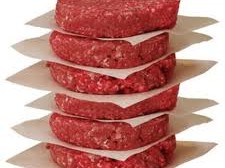 THE cost of producing ground beef and some other beef items in the US will inevitably increase, following the widely anticipated USDA announcement last week that six additional variants of E. coli bacteria will be declared as adulterants in ground beef.
THE cost of producing ground beef and some other beef items in the US will inevitably increase, following the widely anticipated USDA announcement last week that six additional variants of E. coli bacteria will be declared as adulterants in ground beef.
The USDA will start testing for the six non-STECS, as they are known, on March 5 next year, Steve Kay reported in last week’s Cattle Buyers’ Weekly.
The screening tests will be applied to Australian imported trim, in the same way as they are on domestically-produced material.
As already existed with the common variant, E. coli O157:H7, any product found to contain any of the six other E. coli strains will be banned from sale to consumers and will have to be diverted to use as cooked product. Product found to contain the strains after they have been sold will be subject to recall.
USDA’s announcement was applauded by consumer advocates, some scientists and by two companies (Costco and Beef Products, Inc) that already test for the six strains, CBW reported, but industry trade group the American Meat Institute criticised the move.
The new policy was not supported by science and likely would not benefit public health, the AMI said.
“USDA believes the strains are responsible for more than 112,000 illnesses per year, with more than 36,000 attributable to beef. But AMI says that in its policy notice, USDA acknowledges that it does not know how many illnesses will actually be prevented by the move. AMI says only three illnesses have been actually linked to non-STECS in beef,” CBW said on Friday.
Imposing the new regulatory program on ground beef would cost tens of millions of federal and industry dollars, costs that likely would be borne by taxpayers and consumers, AMI executive vice president Jim Hodges told CBW.
“It is neither likely to yield a significant public health benefit nor is it good public policy,” he said.
USDA estimated that the cost of the additional testing will be A$9.7 million per year.
But AMI pointed out that in its notice, USDA also said “it is also challenging to know what the industry cost will be because it is difficult to predict how many establishments will start to test and what the size distribution will be, or to what extent industry will take additional measures that will prevent, reduce or control those hazards, as they do with regard to O157.”
Tyson Foods, the only large US packer to comment on the proposed rule, said its research indicated that the program will be much more costly to implement than the government was projecting. It has been researching various testing systems for the non-STECs and believes such systems will be commercially available by next year’s March deadline.
USDA’s decision to declare the six non-STECs as adulterants in beef was inevitable, but questionable, observers told CBW.
“Consumer and food safety groups had been urging such a move for several years and had petitioned USDA to act. But one of industry’s key objections is that beef is being unfairly singled out. Public health data clearly indicate that there is no public health crisis related to non-STECs in ground beef,” AMI’s Jim Hodges told CBW. “Non-STECs have caused illnesses but non-STECs in ground beef have only been directly linked to one outbreak involving three illnesses,” he said.
The Centres for Disease Control and Prevention estimated that 48 million foodborne illnesses occurred in the US each year, with non-STECs from all food sources accounting for 112,000 of these. Yet federal resources were being devoted only to non-STECs in beef products, accounting for less than 0.1 percent of total foodborne illnesses, Mr Hodges told CBW.
Furthermore, science shows that current technologies used to destroy E. coli O157:H7 are equally effective against all strains.
The new E. coli testing regime will apply also to imported Australian grinding meat entering the US, as it currently does for E. coli 0157:H7. See former USDA under-secretary, Richard Raymond’s recent comments on the issue, “Big changes ahead in food safety arena” uploaded on August 26.



HAVE YOUR SAY